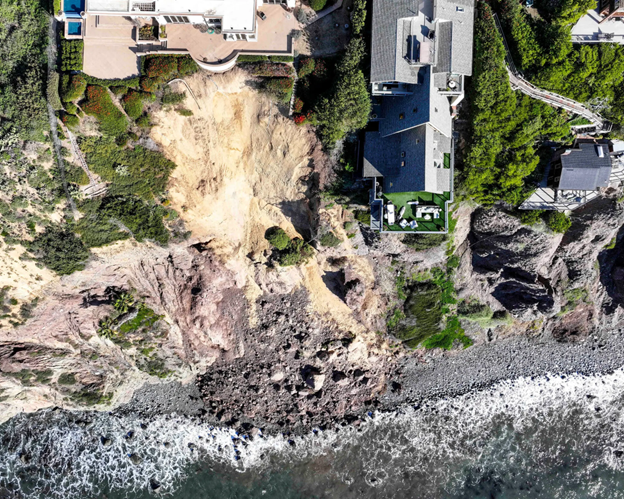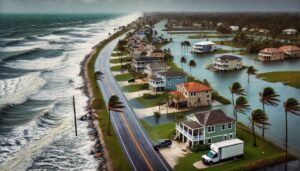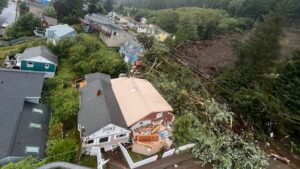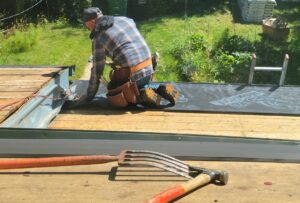Climate change has brought about a new era of challenges for real estate investors. Severe weather events—from wildfires to atmospheric rivers—are no longer anomalies but recurring threats. For investors, the question isn’t just about knowing the risks but understanding their financial implications. In this blog, we’ll delve into the case of 34525 Scenic Drive, Dana Point, CA, to explore how climate risks can shape investment decisions and how tools like Quoll Intelligence can provide property investment insights with predictive risk modeling and climate adaptation strategies for smarter diligence and property risk management.
The Growing Need for Climate Risk Assessment
Every property faces unique risks influenced by its location and climate. While California is widely recognized for its wildfire and drought risks, new threats are emerging. Severe winter storms, intense atmospheric rivers, and resulting erosion, mudslides, and flooding have become increasingly common. For properties like the Dana Point cliffside mansion, these risks are not hypothetical—they’re immediate and impactful. When looking at properties, investors need to ask the right questions to gain the critical property investment insights needed for the best real estate investment strategies.
Key Questions for Investors
- How much will it cost to own the property each year beyond the initial financing?
- How will climate risks impact those costs?
- What can be done to manage risks and mitigate financial impacts?
- Will these risks drag on the property’s value when it’s time to divest?
Case Study: 34525 Scenic Drive, Dana Point, CA
This 9,726-square-foot cliffside property in Orange County serves as a perfect case study for understanding how climate risks affect real estate investments.
The Risks
Quoll Intelligence’s property risk analysis identified several risks for this property, including:
- Landslides: Exacerbated by heavy rainfall and unstable soil.
- Severe Storms: Increased frequency and intensity leading to structural damage.
- Wind Risks: Heightened by the property’s cliffside location.
In February 2024, a powerful atmospheric river brought these risks to life. Torrential rains caused landslides that destabilized the property’s foundation, leading to potentially substantial emergency costs for stabilization and repair over time.
The Financial Impact
Over a 10-year projection, the climate risks significantly influenced the property’s cost structure:
- Cash Reserves: A 62% increase in required reserves.
- Operating Expenses: A 51% rise in ongoing costs.
- Insurance Premiums: Higher rates due to elevated risk factors.
These rising costs make it challenging to achieve a positive return on investment (ROI), reducing the pool of potential buyers and impacting long-term property value.
Solutions: Mitigating Risks and Shaping Financial Outcomes
While the risks cannot be eliminated entirely, strategic mitigation can make a significant difference. Quoll recommended 16 tailored climate adaptation strategies to increase resilience for the Dana Point property, focusing on:
- Structural Reinforcements: Stabilizing the foundation to withstand landslides.
- Drainage Systems: Preventing water accumulation and erosion.
- Wind Barriers: Reducing the impact of strong gusts.
The Results
Implementing these projects created tangible financial benefits:
- 80% Reduction in Sudden Cash Expenses: Emergency costs decreased dramatically.
- $129,000 Saved in Operating Expenses: Over a 10-year period.
- Increased Long-term Value: A more appealing property for future buyers.
Why Comprehensive Analysis Matters
Traditional data sources often fall short in providing actionable property investment insights for property-specific risks. Generalized data at the county or regional level cannot capture the unique vulnerabilities of a specific home. Quoll bridges this gap by combining advanced climate science, detailed property characteristics, and economic risk factors and indicators to provide impact assessment tools for:
- Precise risk profiles.
- Financial impact projections.
- Actionable mitigation strategies.
For the Dana Point property, this depth of property risk analysis could have prevented financial strain by either avoiding the investment or preparing for the necessary adaptations upfront.
Takeaways for Real Estate Investors
Investing in real estate amidst climate volatility requires a proactive approach with the best property investment insights. Here’s what investors need to keep in mind:
- Understand the Risks: Each property’s climate risk factors are unique and need thorough assessment.
- Evaluate the Costs: Beyond financing, factor in rising operating expenses, insurance, and emergency reserves.
- Plan for Mitigation: Identify projects that can lower risks and improve ROI.
- Leverage Tools: Use platforms like Quoll to translate climate data into actionable investment insights.
Climate risks are no longer optional considerations in real estate investing. By integrating detailed risk assessments into your decision-making process, you can protect your assets, optimize costs, and achieve better financial outcomes—even in the face of climate uncertainty.
For more information about how Quoll can provide property investment insights to help you assess and mitigate climate risks for your real estate investments, check out our product overview or contact us directly.





